Installation and connection of the pumping station
Individual water supply to a private house or summer cottage can be from two sources - wells or wells. To automate the supply of water to the house, as well as create a stable pressure, it is necessary to install a pumping station. It consists of a pump hydroaccumulator, pressure switch and safety groups (pressure gauge and drain valve). The plus of this venture is that with such a water supply scheme, any household appliances can work, another good news is that connection is not too difficult a task, if you wish, you can install and connect a pumping station with your own hands.
The content of the article
Choosing a location
Pumping stations are installed near a water source - a well or a well - in a specially equipped pit - a caisson. The second option is in a utility room in the house. The third is on a shelf in the well (such a number will not work with a well), and the fourth is in the underground.
How to determine the suction depth
When choosing a place, first of all, they are guided by technical characteristics - the maximum suction depth of the pump (from where the pump can lift water). The thing is that the maximum lifting depth of pumping stations is 8-9 meters.
The suction depth is the distance from the water mirror to the pump. The supply pipeline can be lowered to any depth; it will pump water from the level of the water mirror.
Wells are often deeper than 8-9 meters. In this case, you will have to use other equipment - a submersible pump or a pumping station with an ejector. In this case, water can be supplied from 20-30 meters, which is usually sufficient. The disadvantage of this solution is expensive equipment.
If you lack just a meter before you can deliver conventional equipment, you can put the station in a well or above a well. In the well, a shelf is attached to the wall, in the case of a well, the pit is deepened.
When calculating, do not forget that the level of the water mirror "floats" - in summer it usually goes down. If the suction depth is on the verge, during this period there may simply be no water. Later, when the level rises, the water supply will resume.
Security considerations
Another point that must be taken into account is the safety of the equipment. If the installation of a pumping station is supposed to be near a house with permanent residence, there are fewer problems - you can choose any option, even in a small shed. Only one condition - it should not freeze in winter.
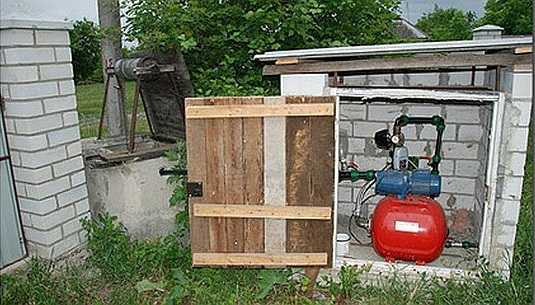
Installation of a pumping station in a barn is suitable for permanent residence and the condition of insulation / heating for the winter
If this is a dacha, where they do not constantly live, the matter is more complicated - it is necessary to arrange a room that does not catch the eye. The safest way to install a pumping station is at home. Although they can carry her away in this case.
The second place where you can install a pumping station is a buried camouflaged caisson.
The third is on a shelf in the well. Only in this case the traditional well house not worth doing. You need a steel cover that can be locked with a secure lock (weld the hinges to the ring, make slots in the cover to hang the locks on). Although, under the house, a good cover can also be hidden. Only the design must be thought out so that it does not interfere.
Convenience and operating conditions
The installation of a pumping station in the house is good for everyone, except that the equipment makes noise during operation. If there is a separate room with good sound insulation and technical characteristics it is possible - no problem. Often they make a similar room in the basement or in the basement. If there is no basement, you can make a box in the basement. Access to it is through a hatch. In addition to sound insulation, this box must also have good thermal insulation - the operating temperature range starts from + 5 ° C.
To reduce the noise level, the station can be placed on thick rubber - to damp vibration (created by a cooling fan). In this case, even installation in the house is possible, but the sound will certainly still be there.
If you stopped at the installation of a pumping station in a caisson, it should also be insulated and also waterproof. Usually, ready-made reinforced concrete tanks are used for these purposes, but you can make a caisson from concrete rings (like a well). Install a ring with a bottom down, and a ring with a lid on top. Another option is to fold it out of bricks, fill the floor with concrete. But this method is suitable for dry areas - the groundwater level should be lower by a meter below the depth of the caisson.
The depth of the caisson is such that the equipment is installed below the freezing level. Insulation expanded polystyrene. Better - extruded. Then you also get waterproofing at the same time.
For a caisson made of concrete rings, it is convenient to use a shell (if you find a suitable diameter). But you can also slab polystyrene, cut into strips and glue it. For rectangular pits and structures, slabs are suitable, which can be glued to the walls using bitumen mastic. You coat the wall, apply insulation, you can additionally fix it with a pair of nails / dowels.
Pump station connection
Choosing the equipment and location for installation is half the battle. You also need to correctly connect everything into the system - the water source, the station and the consumers. The exact connection diagram of the pumping station depends on the chosen location. But in any case there is:
- A suction pipeline that goes into a well or well. He goes to the pumping station.
- The station itself.
- Pipeline to consumers.
All this is true, only the piping schemes will change depending on the circumstances. Let's consider the most common cases.
Water supply from a well for permanent residence
If the station is installed in a house or in a caisson somewhere on the way to the house, the connection diagram is the same. On the supply pipeline, lowered into a well or a well, a filter is installed (most often - a regular mesh), after it a check valve is placed, then a pipe goes. Why a filter is understandable - to protect against mechanical impurities. A check valve is needed so that when the pump is turned off, water does not flow back under its own weight. Then the pump will turn on less often (it will last longer).
The pipe is led out through the wall of the well at a depth just below the level of soil freezing. Then it goes into a trench at the same depth. When laying a trench, it must be done straight - the fewer turns, the lower the pressure drop, which means that water can be pumped from a greater depth.
To be sure, you can insulate the pipeline (lay sheets of expanded polystyrene on top, and then cover it with sand, and then with soil).
At the entrance to the house, the supply pipe passes through the foundation (the place of passage is also insulated), in the house it can already rise to the installation site of the pumping station.
This method of installing a pumping station is good because if everything is done correctly, the system works without problems. The inconvenience is that it is required to dig trenches, as well as bring out / enter the pipeline through the walls, and also that when a leak appears, it is difficult to localize the damage.To minimize the chances of leaks, take proven quality pipes, lay the whole piece without joints. If there is a connection, it is advisable to make a viewing well.
There is also a way to reduce the amount of earthwork: lay the pipeline higher, but it is good to insulate and additionally use it heating cable... This may be the only way out if the site has a high level of groundwater.
There is one more important point - the cover of the well must be insulated, as well as the rings outside to the depth of freezing. It's just that the section of the pipeline from the water mirror to the outlet to the wall should not freeze. For this, warming measures are required.
Connecting the pumping station to the water supply
Often the pumping station is installed to increase the pressure in the water supplye with centralized water supply. In this case, a water pipe is connected to the station input (also through a filter and a check valve), and the output goes to consumers.
At the entrance, it is advisable to put a shut-off valve (ball) so that, if necessary, you can turn off your system (for repair, for example). The second shut-off valve - in front of the pumping station - is needed to repair the pipeline or the equipment itself. Then it also makes sense to put a ball valve at the outlet - so that, if necessary, cut off consumers and not drain water from the pipes.
Well connection
If the suction depth of the pumping station for the well is sufficient, the connection is no different. Unless only by the fact that the pipeline exits at the point where the casing ends. Here they usually arrange a caisson pit, and you can immediately put a pumping station.
As in all previous schemes, a filter and a check valve are installed at the end of the pipe. At the entrance, you can put a filling valve through a tee. You will need it at the first start.
The main difference between this installation method is that the pipeline to the house actually runs along the surface or is buried to a shallow depth (not all have a pit below the freezing depth). If a pumping station is installed in the country, it's okay, the equipment is usually removed for the winter. But if the water supply system is planned to be used in winter, it must be heated (with a heating cable) and insulated. Otherwise it won't work.
Pump station start-up
In order to start the pumping station in operation, it is necessary to completely fill it and the supply pipeline with water. For this, there is a special filler hole in the body. Pour water into it until it appears. We twist the plug into place, open the tap at the outlet to the consumers and start the station. At first, the water comes with air - air locks come out, which were formed when filling the pumping station. When the water flows in an even stream without air, your system has entered the operating mode, you can operate it.
If you have poured water, and the station still does not start - the water does not swing or comes in jerks - you need to figure it out. There are several possible reasons:
- there is no check valve on the suction pipeline lowered into the source, or it does not work;
- somewhere on the pipe there is a leaky connection through which air is leaking;
- the resistance of the pipeline is too high - a pipe of a larger diameter or with smoother walls is needed (in the case of a metal pipe);
- the water mirror is too low, there is not enough power.
To exclude damage to the equipment itself, you can start it by lowering the short supply pipe into some container (water tank). If everything works, check the line, suction depth and check valve.

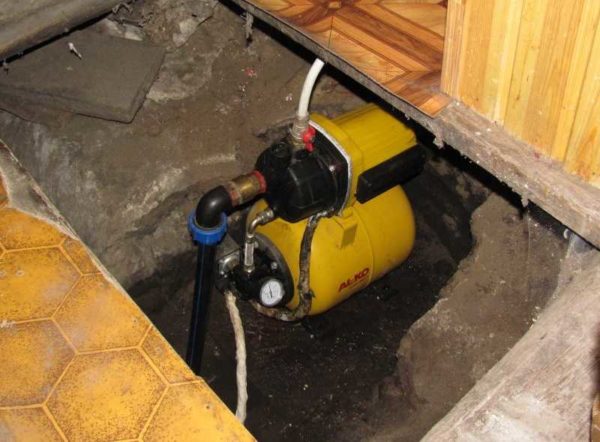
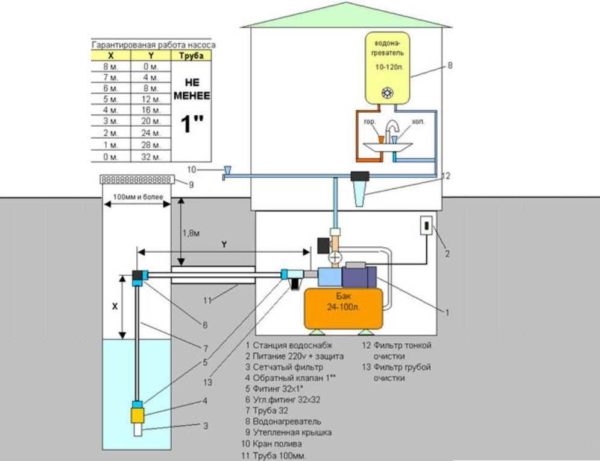
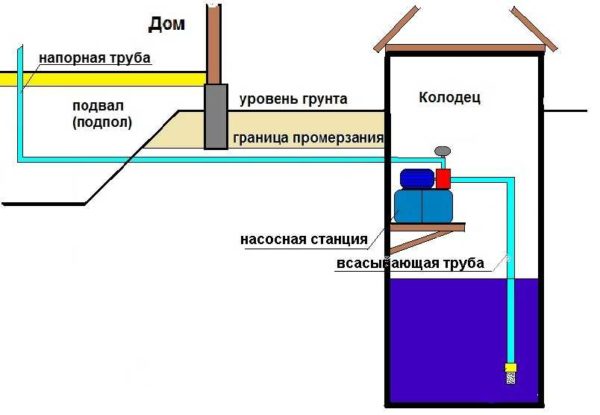
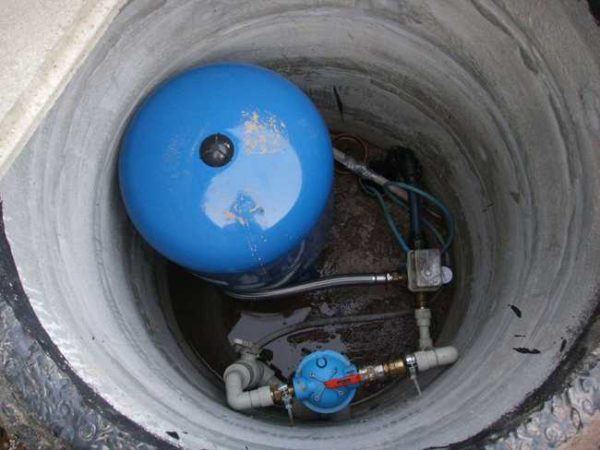
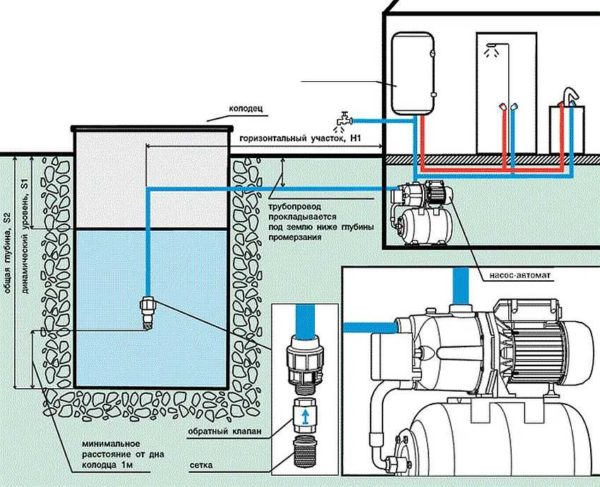
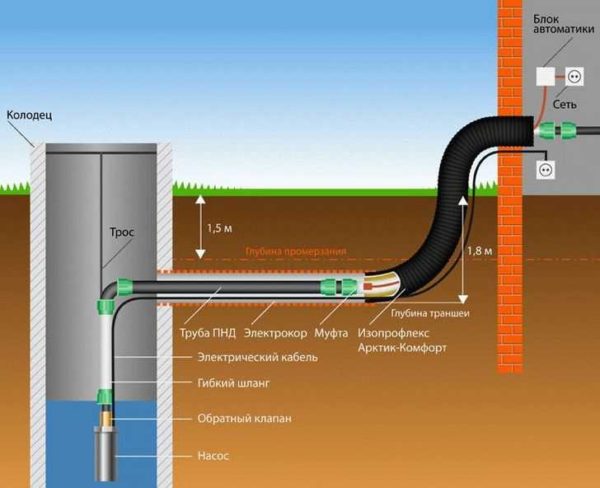
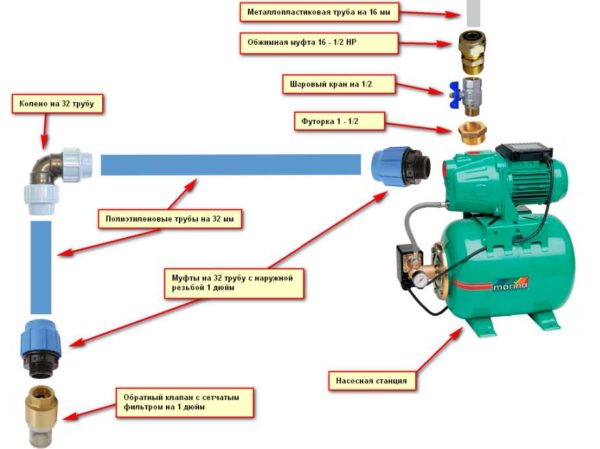
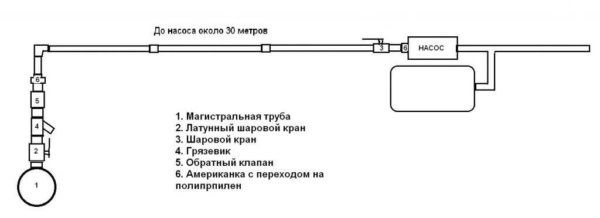
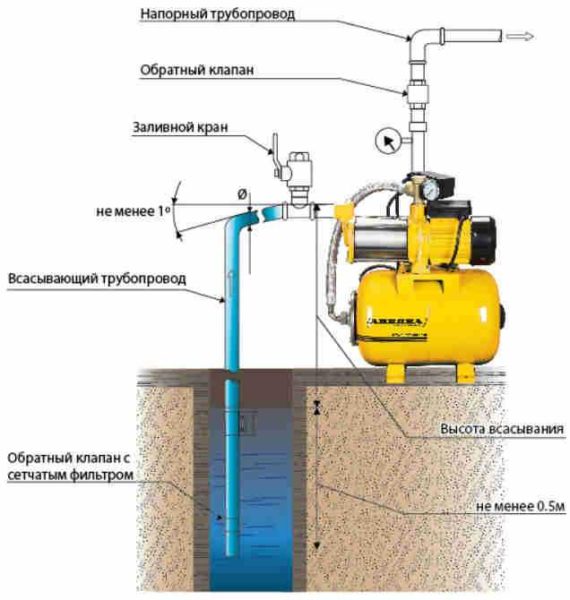
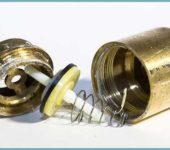


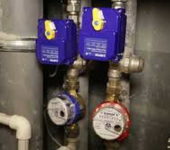






Hello!
Thanks for such a great article! Everything is clear and even no questions have arisen!
Finally, I realized my mistakes when starting a household pumping station in the country.
Thanks again!
Goodbye.
Best regards, Astanin Ivan Konstantinovich
Thank you, very useful information, article will help me!